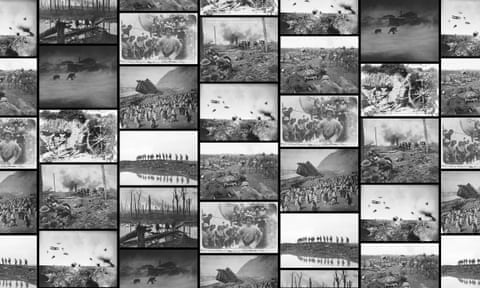Click on the audio buttons to hear the conversations between the Guardian Australia picture editor, Jonny Weeks, the Guardian Australia photographer, Mike Bowers, the senior curator of photography at the National Gallery of Australia, Shaune Lakin, and the curator at the Centre for Contemporary Photography, Pippa Milne.
audio1

- The Raid, aka Over The Top, a composite photograph made by Frank Hurley. Courtesy of the Australian War Memorial.
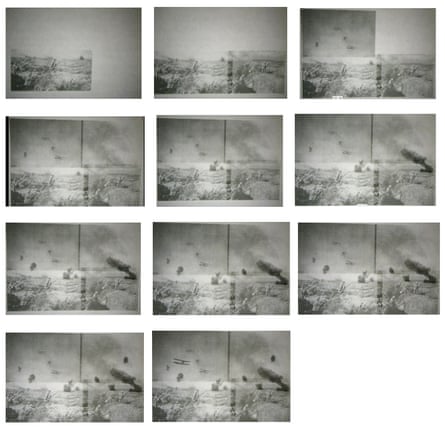
- An illustration of how 12 photographs were fused together to form the composite known as The Raid. Frank Hurley/Australia War Memorial
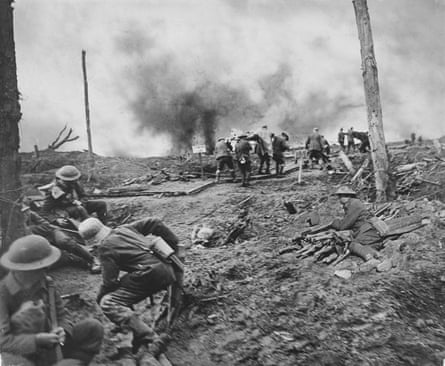
- Another of Hurley’s composites titled Carrying in the wounded during the height of battle. Frank Hurley/Australia War Memorial
However, Hurley didn’t just capture the drama of war through fictional composites. He also shot authentic, unaltered images of the conflict, as per below.

- ‘Men wounded in the Ypres Battle waiting along the Menin Road to be taken to the clearing station. German prisoners are assisting with stretcher bearing.’ 20 September 1917. Frank Hurley/Australia War Memorial

- ‘Supporting troops of the 1st Australian Division walking on a duckboard track near Hooge, in the Ypres Sector. They form a silhouettte against the sky as they pass towards the front line to relieve their comrades, whose attack the day before won Broodseinde Ridge and deepened the Australian advance.’ 5 October 1917. Frank Hurley/Australia War Memorial
divider
audio2

- Valley of the Shadow of Death by Roger Fenton/Library of Congress, US
divider
audio3
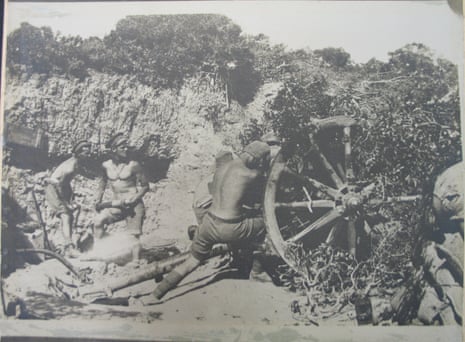
- A photograph by a soldier: A 9th Battery 18 pound field gun in action during a Turkish attack in WWI. The photo was reproduced in the Illustrated War News (London) on 29 September 1915 with the following caption: “With the colonial ‘Naked Army’ in Gallipoli: Australian gunners stripped for the fray during a fierce artillery duel …”
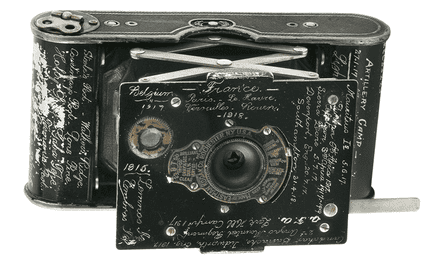
- The Kodak Vest pocket camera. This one was owned by Sergeant Percy Virgoe of the 4th Light Horse Regiment. Courtesy of the Australian War Memorial.
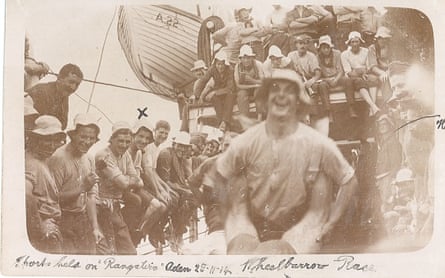
- Another photograph by a soldier: Aden, 28 November 1914. Sports held on HMT A22 Rangatira. ‘The wheelbarrow race is being thoroughly enjoyed by everyone on board’. Corporal Hose is marked with an X; sergeant Owen Kenneth Stewart is arrowed on right’
divider
audio4

- Baynazar Mohammad Nazar, a patient, lies dead on the operating table of Operating Theatre 3, inside the MSF Kunduz Trauma Center in Afghanistan following an errant attack by an American gunship.
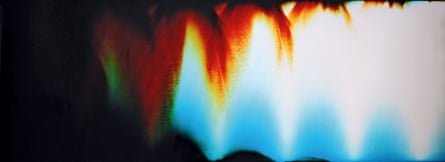
- The Day Nobody Died 2008, by Adam Broomberg and Oliver Chanarin.
divider
audio5
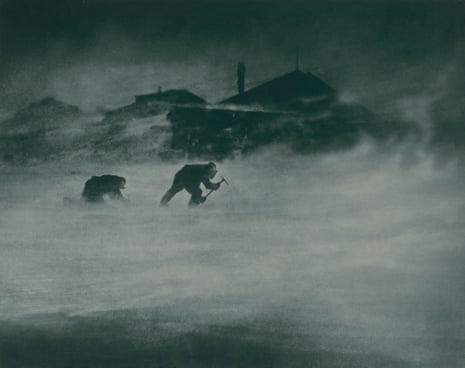
- Blizzard at cape Denison. Whetter and Close trying to get ice for drinking water from a glacier, 1912. Frank Hurley/National Library of Australia
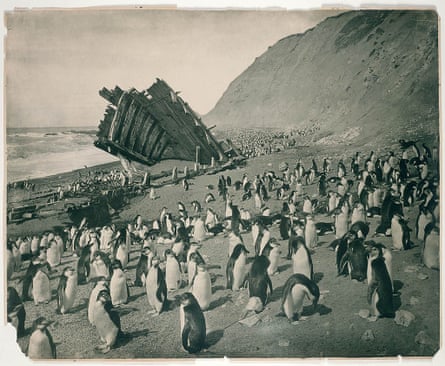
- Wreck of the ‘Gratitude’, Macquarie Island, 1911. Frank Hurley/National Library of Australia.
